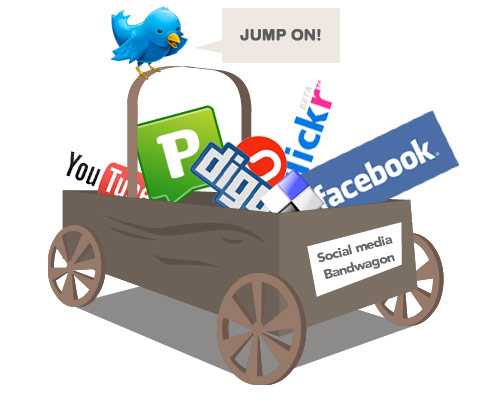Yes, Content Rules… With a Clear Strategy
We’re proud sponsors of tomorrow’s launch party for the new book Content Rules by Ann Handley (Chief Content Officer for MarketingProfs), and C.C. Chapman (founder of DigitalDads). We’re big fans of both authors and know their ongoing content quite well – so I know the book will become a social media business bible of sorts.
Content has been on my mind quite a lot this week as we’ve been working with clients to create marketing and sales content. One thing I’ve noticed is that many businesses are getting caught up in creating content but have no strategy behind it. They want us to create a custom Facebook tab or an event microsite or a video to tell a story. But what I’ve found is that they aren’t always thinking about who they want to tell the story to, or what they want the story to accomplish – or even what action or return they are expecting from issuing their content. And, they’re usually not sure where they want the content to live – or why they want it in a certain place over another.
Jumping into content development without a strategy in mind is indicative of some of the social media hype. Brands just want to get “something cool” out there and they aren’t thinking about the RRR – resource to return ratio. At the same time, many complain that involvement in social media takes too much time and the ROI isn’t yet clear. That’s what happens when you don’t have a strategy!
Creating content for content’s sake is not a good use of your resources: time, money or people. It’s one of the reasons that I believe PR and marketing should be involved in the social media process for businesses. Sure, the marketing department doesn’t have to create the content necessarily, but they should have a hand in helping to shape the messages within it, as well as where it should live and how it should be promoted. Marketers are experts at messaging – and if your content has an empty or off-kilter message, it’s just noise.
Here are a few simple things businesses should be thinking about before they jump into creating social media content:
- What do we want to share?
- In what form do we want to share it?
- Who do we we want sharing it? (CEO? Customers? Partners? Spokesperson?)
- Who do we want to say it to?
- Why will they listen/watch/read/care?
- What do we want them to do as a result? (If anything)
- What will we consider a success as a result of creating this content?
- How will we track and measure that success?
- What resources do we need?
- Do we expect people to interact with this content? Share it? Write about it? How do we make that happen?
- Where do we want it to live?
- How will we share and promote it?
It sounds simple, but you would be surprised at how many brands jump into content development without asking these basic questions. They see something that worked for another brand (ex: Old Spice) and they say, “Hey, we can do that!” – without thinking about how it applies to their customers, their business and their goals.
Don’t create noise. Create content with a purpose. A purpose comes from defining a clear strategy before you begin.
Got more tips for businesses looking to create social content? We’d love for you to share them in the comments. Thanks for reading!







